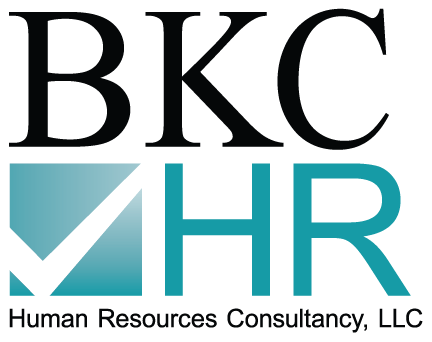 Normalization adjustments are unique to business valuation engagements. It is not uncommon for the valuator to make normalization adjustments. Normalization adjustments are intended to change certain financial data of a subject business to make the historical financial operations look like normal conditions so as to be on a consistent basis with comparable companies and what a prospective buyer might reasonably be expected to obtain from the company in the future, using history as a guide. They may be unusual or infrequent.
Normalization adjustments are unique to business valuation engagements. It is not uncommon for the valuator to make normalization adjustments. Normalization adjustments are intended to change certain financial data of a subject business to make the historical financial operations look like normal conditions so as to be on a consistent basis with comparable companies and what a prospective buyer might reasonably be expected to obtain from the company in the future, using history as a guide. They may be unusual or infrequent.
Certain factors may affect the normalization adjustments, such as the size of the ownership interest, the type of entity, the definition of value or the purpose of the valuation. If financial data is provided in a basis of accounting other than generally accepted accounting principles, (GAAP) adjustments should be made to make the data comparable. For example, if the financials are on a cash basis of accounting and do not include accounts receivable and accounts payable, then the accounts receivable and accounts payable should be added to the balance sheet and the related changes from year-to-year made to the income statements. Likewise, if the financials are on an income tax basis of accounting, an adjustment to remove section 179 or bonus depreciation may be warranted.
Common balance sheet adjustments found when analyzing the financials would be non-operating assets, excess assets, asset shortages and related party loans. If the items identified are not used in the company’s core business assuming a normal operating structure, adjustments need to be made. Let’s look at each:
Non-operating assets are those assets unrelated to the company’s primary operations. For example, if the business owner purchased a condo in Florida for the owner’s personal use, that asset would be a non-business asset with no specific business purpose. Another example, if a manufacturer has an investment in an ice cream shop, that asset would be an unrelated business asset unrelated to the company’s core business.
Excess assets exist when the company has more assets than it needs to operate in normal conditions. Examples are excess cash and land held for future expansion.
Asset shortages exist when the company lacks sufficient assets or has too many liabilities to operate normally. Examples are when a company doesn’t maintain adequate inventories or has incurred excessive accounts payable liabilities.
If a company has significant non-operating or excess assets, the valuator normally should adjust the balance sheet for the excess. The income statement may also need to be adjusted. Depreciation and any other income and expenses related to the Florida condo would be removed. All income and expenses related to the ice cream shop would also be removed. The object is to present the financial statements without any non-operating or excess assets. These non-operating and excess assets are valued separately and then added to the company’s primary operations.
Common income statement adjustments might include unreasonable compensation and related fringe benefits, non-recurring income and expenses, related party revenue or expenses, income taxes or income and expenses related to non-operating assets discussed above. Let’s look at each:
Unreasonable compensation exists when a profitable company pays part of the profits to owners as excess compensation or they may pay other family members who are no-show employees. An unprofitable company might underpay the owners to improve the company’s bottom line. An adjustment might be needed to reflect an owner’s reasonable compensation. Fringe benefits, in these circumstances, may also need to be adjusted since they are normally a percentage of the compensation. Perks to the owner for personal meals, entertainment and memberships that would not exist under new ownership would also be adjusted. Other owner benefits such as key man insurance, other life insurance premiums and pensions would be items subject to adjustment.
Non-recurring income and expenses should be removed from the income statement. For example, moving expenses incurred to move into a new facility two years ago, gains or losses on the sale of fixed assets, or extraordinary items.
Related party revenues or expenses include agreements with related parties, such as leases, management fee arrangements, etc. If any such agreements are unrelated to the company’s primary business, income and expenses related to those arrangements should be eliminated. If those arrangements are related to the company’s primary business, but are not an arm’s length arrangement, they should be adjusted to market value. An example of a related party expense would be if the sole owner of the company also owns the building and leases the building to the company at a lower than market rate, an adjustment would be necessary.
Income tax will need to be recalculated on pretax income including the normalizing adjustments. Tax rates at the valuation date should also be used.
Ratios can be an effective part of the financial analysis. Ratios can highlight trends and allow comparisons with industry peers. Valuators use ratio analysis to identify where adjustments might be necessary. Comparing the company’s ratios to industry or comparative company data often reveals areas that may need adjustment. For example, identifying excess assets, asset shortages, unrecorded revenues and unreasonable compensation can be highlighted by these ratios and comparisons.
Normalization adjustments are intended to change certain financial data of the company to make the best possible estimate of the true economic earning power of the business. The adjustments included here are the most common. Each individual company is unique and may have other costs or revenue adjustments that may need to be adjusted. Remember that normalizing adjustments are but one step in many in the valuation process. To discuss further, please don’t hesitate to contact us at (908) 782-7900 or email info@bkc-cpa.com.




